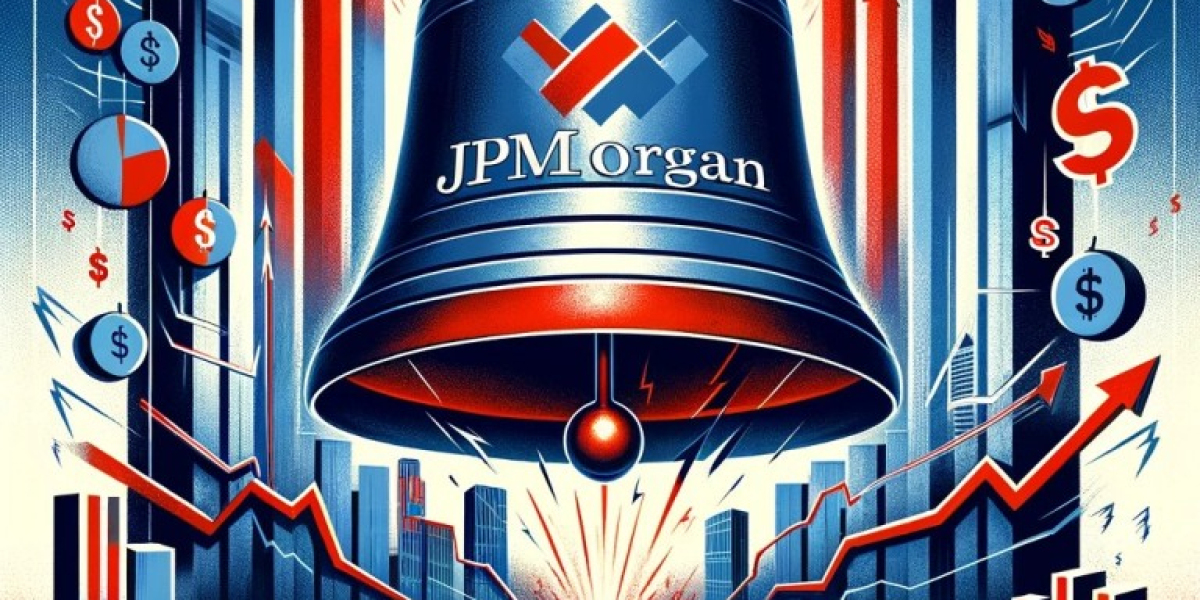JPMorgan, America’s banking giant, has recently sounded a stark warning about the U.S. economy’s trajectory and the stability of the dollar. This alert comes at a critical juncture, as the U.S. grapples with a colossal $34 trillion national debt, a ticking time bomb threatening to disrupt market equilibrium.
JPMorgan’s outlook on the U.S. economy is not just a cautionary tale but a clarion call to address what it describes as a ‘boiling frog’ scenario. This metaphor paints a vivid picture of a situation worsening gradually until it reaches a disastrous climax, a fate that seems imminent for the U.S. economy if significant measures are not taken.
The Debt Dilemma and Global Challenges
The heart of JPMorgan’s concern lies in the burgeoning national debt, which hit a new peak at $34 trillion in January 2024. This figure, growing uncontrollably, poses a potential crisis for the U.S. stock markets. According to JPMorgan strategist Michael Cembalest, the U.S. is inching closer to a point of debt unsustainability with each fiscal stimulus. Despite the history of deteriorating U.S. government finances with minimal immediate impact on investors, Cembalest warns that this trend could shift dramatically, likening the situation to the aforementioned ‘boiling frog’ analogy.
Simultaneously, the de-dollarization efforts spearheaded by BRICS (Brazil, Russia, India, China, and South Africa) are adding to the U.S.’s economic woes. The ambition of these nations to challenge the dollar’s global supremacy could potentially exacerbate the U.S. economy’s vulnerabilities. If BRICS succeeds in moving away from the dollar, it could undermine the U.S. economy’s standing, creating a perilous mix of high debt and reduced global financial influence.
Contrasting Economic Indicators
Despite JPMorgan’s alarming prognosis, the U.S. economy displayed resilience in certain sectors throughout 2023. Consumer spending remained robust, with retail sales consistently high, reflecting the indomitable spirit of U.S. consumers. The labor market also showed remarkable strength, with the creation of over 200,000 jobs in December alone and a steady unemployment rate at 3.7%. These indicators suggest an economy that, while facing challenges, still possesses significant vitality.
The financial markets echoed this sentiment, with major U.S. indexes like the Dow Jones, Nasdaq, and S&P 500 showing substantial growth. Even the crypto market, which had previously experienced a downturn, saw a rebound in 2023. This growth narrative, however, sits in stark contrast to the looming debt crisis and JPMorgan’s dire predictions.
The Federal Reserve’s actions in 2023, especially its approach to interest rates, played a crucial role in shaping the economic landscape. With a series of rate hikes aimed at curbing inflation, the Fed’s policy moves were a balancing act, trying to cool inflation without triggering a market slump. The housing market, however, felt the pinch of these policies, with high mortgage rates persisting and a stagnation in home sales, suggesting that not all sectors could weather the Fed’s stringent measures.
In conclusion, while JPMorgan’s warning casts a long shadow over the U.S. economy, the actual economic landscape presents a more nuanced picture. On one hand, there’s the undeniable challenge posed by the soaring national debt and global economic shifts. On the other, the resilience shown by certain sectors provides a glimmer of hope. As 2024 unfolds, the interplay between these divergent economic forces will be critical in determining the U.S. economy’s true course. Whether it can escape the ‘boiling frog’ scenario painted by JPMorgan remains a question only time can answer.







